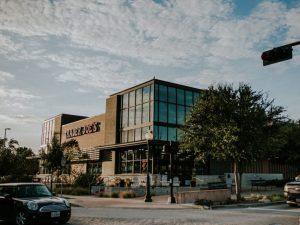What’s Driving Dallas Retail: An Investor’s View
Some retail spaces in the Metroplex are seeing record occupancies and rental rates. Jon Hetzel of Madison Partners shares insights.
Following the shock of the pandemic, developers have not been rushing to add new retail spaces, which has contributed to the sector’s resilience. In Dallas-Fort Worth, a metro recording strong population and employment growth, there’s even an undersupply of retail properties, according to a recent CBRE report. Despite lower real estate development costs than the U.S. average, retail space per capita in the Metroplex dropped 8 percent since 2006, while the U.S. average stood at 1 percent, the same source shows.
To understand what is driving demand today in the Dallas-Fort Worth retail market, Commercial Property Executive reached out to a local expert. Jon Hetzel is a partner with Madison Partners, a full-service real estate company that mostly focuses on infill neighborhoods such as Deep Ellum and Lower Greenville. Hetzel has a deep understanding of the Dallas retail market, having worked closely with both small businesses and national retailers that are present in the area.
In the interview below, he touches on the hottest areas in the metro for retail investment and shares details about the firm’s current projects and business model.
READ ALSO: Will CRE Conditions Become More Challenging?
You know the Dallas retail market very well. How much has it changed over the past few years?
Hetzel: Prior to the pandemic, a lot of retail experts were already considering what retail would look like with the growth of e-commerce. Despite initial severe struggles in segments such as restaurants, the pandemic ended up accelerating the switch to experience-based and service retail tenants, moving away from traditional big-box retail. Restaurants, bars, amusement venues, coffee shops, specialty retail or facial treatments and the like are doing better than ever.
Which Dallas areas show the strongest fundamentals today? Are there any submarkets that are seeing less growth?
Hetzel: Generally speaking, the northern suburbs continue their amazing growth and new markets continue to be opened in the north. The southern sector and urban walkable areas have a lot of encouraging signs of growth—just look at the Redbird Mall redevelopment. Multi-story retail, particularly in B and C locations, always struggles.

Trader Joe’s at 2001 Greenville Ave. in Dallas, totaling 14,790 square feet. Image courtesy of Madison Partners
Please describe the retail portfolio you manage and the type of businesses that occupy your spaces.
Hetzel: We have a mix of infill assets, in mixed-use districts like Deep Ellum and Lower Greenville, and traditional shopping centers. Our infill assets typically have tenants like chef-driven restaurants, hair salons and funky retail. Our traditional shopping centers have more traditional tenants, with a mix of national retailers and local mom-and-pops.
What is your approach when it comes to identifying a potential investment?
Hetzel: Right now, our retail acquisitions are usually in areas where we feel like we have a strategic advantage due to superior knowledge of the submarket, zoning, etc. We are usually best placed to tackle assets that are older, neglected and a bit more complicated to renovate. We…are also pursuing other sectors of real estate to diversify our portfolio.
Tell us a few details about notable projects that Madison Partners is involved in.
Hetzel: We are currently completing the renovation of a 10,000-square-foot, 100-year-old property in the heart of Lower Greenville that will be filled with three soft good retail tenants, which are 2nd STREET from Japan, and two local tenants. This is especially important because this area of Dallas is one of the hottest submarkets for restaurant space but needs a more balanced mix of uses. The turnaround of Lower Greenville helped get its start when we built the first Trader Joe’s in the City of Dallas around 10 years ago and put in the original Truck Yard, which was innovative at the time because it was a food truck park and bar/restaurant combo.
READ ALSO: Retail Property Redevelopment Strategies
How are Dallas retail landlords catering to tenants’ dynamic needs?
Hetzel: Some of the fundamentals never change: things like supply constraints, traffic and demographics. As more retail has shifted to experiences as opposed to traditional shopping, landlords are having to factor in things like façade renovations, grease traps, increased electrical needs and parking requirements.
How do you expect your retail properties to perform in the upcoming months? Do you feel like you’re better prepared now to overcome an economic slowdown?
Hetzel: We are always a bit conservative since we are a family-owned company with a long-term hold strategy. Collectively, we have been through the 1980s savings and loan bust, the early 2000’s tech bubble, the Great Recession and the pandemic. Generally speaking, our portfolio as a whole is performing better than ever, and we are in a position and have the experience to manage any temporary economic downturn.
Looking ahead, what do you think will shape the Dallas retail market?
Hetzel: One of the biggest factors in the Dallas retail market is that we are undersupplied on an aggregate basis. Retail has not seen the flood of capital and investment that multifamily and industrial experienced so there has been very little new retail construction over the past 10 years or so. This has led to record occupancies and rental rates, and we expect that to continue due to the demographic growth of North Texas.









You must be logged in to post a comment.